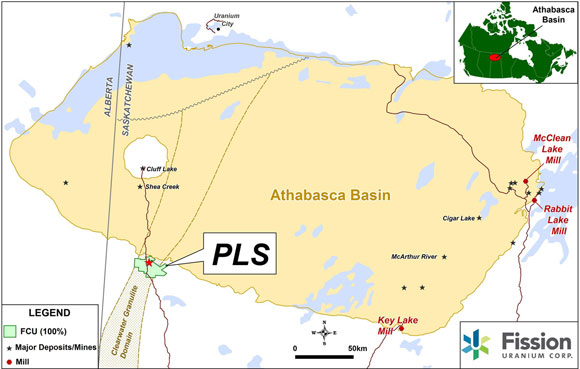The Energy Report: In an interview last fall, Hinds, you noted that master limited partnerships (MLPs) had "massively outperformed the broader stock market" for several years previously. Then the MLP sector went into free fall. What's going on?
Hinds Howard: During an eight-day period in October, the MLP index lost 13% of its value. We have not seen a streak like that since the beginning of 2008. Retail investors hold MLPs for a long time. There are tax consequences for trading in and out of an MLP; selling raises the tax bill. Retail investors were not the big sellers during the streak.
There are reports that certain hedge funds had non-MLP trades that went against them, and they were forced to sell off their MLP winners. A large amount of total return swaps in the MLP space could have contributed to the sell-off. It's tricky to figure out, because the MLP sector is fully invested from an institutional standpoint. The big, dedicated MLP mutual funds are hit with negative tax consequences when they sell, too, so they tend to hold no matter what. Their cash is fully invested and not really available to buy MLPs on short notice, without additional inflows. Hedge fund selling seems to have caused the correction. The good news is that investors can buy names that sold off 15% plus. And during the past week, MLPs are back up.
TER: Was October the first MLP market correction since 2008?
HH: We had a correction of more than 10% last year. One day in August 2011, the MLP sector sold off 8.5%. Macro factors do impact liquidity across the overall stock market, and MLPs have limited liquidity trading volume. When the overall market sees less trading volume, MLP moves tend to be exaggerated.
TER: Has the oil and gas surplus affected the valuation of energy MLPs?
HH: Generally, the stock market valuations of MLPs are affected when oil prices fall below $90 per barrel. But the vast majority of an MLP's cash flow is not impacted by direct movements in commodity prices. Certainly a slowdown in production would be bad for MLPs, but that is not the case. The total return proposition remains quite attractive. It includes a 5–6% distribution yield and a 6–8% distribution growth rate on average.
TER: Is now a good time to buy MLPs?
HH: There has rarely been a bad time to invest in MLPs. The tailwinds that have historically supported the growth of this sector remain in place. The outlook for energy infrastructure investment continues to accelerate. We continue to need more pipelines, more processing facilities, more export terminals, more everything. MLP-operated infrastructure projects generate attractive returns because the returns from building a pipeline exceed the cost of capital. The intrinsic value of MLPs based on distribution discount models screens "attractive" because low interest rates are a key input to those valuation models.
"Hedge fund selling seems to have caused the correction. The good news is that investors can buy names that sold off 15% plus."
Obviously, if interest rates rise, that potentially goes against MLP returns. But even then, the valuation of MLPs remains compelling relative to bonds, which cannot grow their payments. MLP valuation remains attractive relative to real estate investment trusts (REITs), which can grow their dividends but probably not as fast as MLPS, and which have lower yields. Utilities can grow, but they tend to grow more slowly and act more defensively. MLPs are compelling relative to these other yield-based equities partly because MLPs focus on building out capacity, rather than growing through expensive acquisitions.
TER: How does one judge the potential of a new MLP?
HH: Many MLPs are spun off larger corporations, and that is a positive sign. Being tied to a strong parent helps with access to capital and limited debt. Cash flow in excess of current distribution is very important. Distribution coverage provides the cushion in a downturn. And having a large percentage of fee-based contracts is very important. Even more important is having a large percentage of take-or-pay contracts. On those deals, customers pay for access to a pipeline even when they are not using it. And the MLPs that really outperform are the dropdown MLPs, which buy assets from the parent company over time.
TER: Does it matter whether an MLP is positioned downstream or upstream of the wellhead?
HH: Downstream refining carries its own commodity price exposure. Being in the middle of the energy value chain is preferred.
TER: Is there a risk to being upstream?
HH: The closer an MLP is to the wellhead, the more susceptible it is to a downturn in energy prices. A long-haul pipeline is more insulated from risk as it serves a producing region comprised of many wellheads.
TER: How are the MLP indexes performing?
HH: The Alerian MLP Index (AMZ:NYSE) is doing better than the Alerian MLP Equal Weight Index (AMZE) or the Cushing 30 MLP Index (MLPX:NYSE) because it is a market cap-weighted index, and larger MLPs have outperformed this year. Kinder Morgan Energy Partners L.P. (KMP:NYSE) represents a very large portion of the Alerian MLP Index. The index performed well following the announcement of the acquisition of Kinder Morgan Energy Partners (an MLP) by Kinder Morgan Inc. (KMI:NYSE) (the original parent corporation). The higher the weight of Kinder Morgan in an MLP index, the better that index performs. During the recent downturn, Kinder Morgan Energy Partners did not selloff as much as other MLPS. The larger-cap MLPs tend to do better during downturns.
TER: How many MLPs are there in the Alerian MLP Index?
HH: About 25% of the Alerian MLP Index is represented by Kinder Morgan Energy Partners and Enterprise Products Partners L.P. (EPD:NYSE). There are around 120 MLPs, but only 50 are listed in the Alerian MLP Index. There are a number of qualification requirements. There is no widely followed index that has all the MLPs in it. That is one of the problems with the space right now.
TER: What qualifications does a company have to meet to be in the Alerian MLP Index?
HH: Qualifications include having a partnership or LLC structure, a certain level of market capitalization, trading volume and consecutive distribution payments at the minimum quarterly distribution or above. Because general partners are not allowed in the Alerian MLP Index, Energy Transfer Equity L.P. (ETE:NYSE) is not part of the index. It gets most of its cash flow directly from MLPs and incentive distribution rights that it owns. These rules are subject to change by management of the index.
"When the overall market sees less trading volume, MLP moves tend to be exaggerated."
Because Kinder Morgan is consolidating its pipeline business, Kinder Morgan Energy Partners will have to come out of that index based on the current rules. And so will El Paso Pipeline Partners L.P. (EPB:NYSE), which is also being acquired by Kinder Morgan Inc. Those two MLPs currently represent 11% of the Alerian MLP Index. The question is, what does Alerian plan to do? Taking that much market cap away from its index could drastically affect performance for exchange-traded funds and other market trackers. It will be great if Alerian decided to expand the number of names in the index to make up for losing that market cap.
I do hope that Kinder Morgan Inc. is not left in the index as a corporation. It is important to keep the Alerian MLP Index for only MLPs. Putting a corporation in the index opens up the possibility for including other corporations, which would dilute the index and make it less clear. The Kinder Morgan deal is expected to close by Thanksgiving, so an announcement will be forthcoming.
TER: What MLPs do you like?
HH: MLPs that generally outperform in most environments are those that have high distribution growth rates, high distribution coverage, good balance sheets, fee-based business models, and operations focused in and around regions with a high level of producer activity. MLPs that meet those criteria include Western Gas Partners, L.P. (WES:NYSE), EQT Midstream Partners, LP (EQM:NYSE) and Summit Midstream Partners LP (SMLP:NYSE).
Then there are MLPs with businesses that benefit from the growth in exports of energy commodities. Names that fall in that category include Targa Resources Partners L.P. (NGLS:NYSE), Sunoco Logistics Partners L.P. (SXL:NYSE) and Energy Transfer Partners L.P. (ETP:NYSE).
TER: Let's talk about those MLPs.
HH: Western Gas Partners has a very strong parent company that supports its growth, Anadarko Petroleum Corp. (APC:NYSE). Anadarko is very active in the DJ Basin in Colorado, and also in the Delaware Basin. We see those areas as very attractive for production activity. Western Gas is going to benefit from building infrastructure that Anadarko needs. It can also supply infrastructure to other customers. Western Gas has a great management team. It enjoys a solid distribution coverage ratio. It meets all the criteria that one looks for in a solid MLP.
EQT Midstream has a great core asset: a natural gas pipeline asset in the Marcellus called the Equitrans system. Its parent company, EQT Corp. (EQT:NYSE), is a very active producer in the region, and it firmly supports the growth of EQT Midstream. The MLP is building a takeaway long-haul natural gas pipeline that reaches into the southeastern United States, where there is a lot of demand for gas from utilities. It's a very nice MLP.
Summit Midstream Partners has gathered assets in the Marcellus and Utica Shales. These assets feed into processing facilities being built by Mark West Energy Partners L.P. (MWE:NYSE.MKT). Summit is a structurally sound MLP. It gets 90%-plus of its cash flow from fee-based contracts supported by minimum volume commitments. It is also expected to acquire additional assets in the Bakken Shale from its private equity-backed parent, Summit Midstream Partners LP (SMLP:NYSE).
"We expect MLP distribution growth rates to remain at historic levels for the next few years."
Targa Resource Partners announced its acquisition of Atlas Pipeline Partners L.P. in October. Atlas Pipeline has a solid footprint in the Permian Basin that overlaps well with Targa's assets. Targa is active in propane exports on the Gulf Coast. It is a well-run partnership with a lot positive characteristics in terms of distribution coverage and balance sheet strength and growth factors.
Sunoco Logistics is also going to benefit from exports. It is developing projects that will provide takeaway capacity for ethane and propane out of the Marcellus Shale area to markets in Canada and eventually abroad. It also has the Nederland terminal on the Gulf Coast, which will export natural gas liquids once online. And it has large crude oil pipeline expansion projects coming out of the Permian Basin. Sunoco Logistics' market valuation looks attractive on a distributable cash-flow basis, as does EQT Midstream's market valuation, relative to other fast-growing MLPs, despite low current yields for each.
Energy Transfer Partners is involved in a number of large pipeline projects, and a liquefied natural gas export project. It is tied to a lot of the positive trends in the sector. Energy Transfer Partners trades at attractive distributable cash flow multiples relative to other large cap MLPs.
TER: Thanks for your time, Hinds.
 Hinds Howard leads CBRE Clarion's MLP investment team. CBRE Clarion is an asset management firm with more than $25B in assets under management. Prior to joining CBRE Clarion Securities in 2013, Howard was a portfolio manager and partner managing separate accounts with a MLP investment focus at Guzman Investment Strategies. While at Guzman, Howard managed client portfolios investing in MLPs and North American energy securities. He previously worked for Lehman Brothers, analyzing and modeling public and private energy MLPs, first in the investment banking division and subsequently for an investment fund investing in MLPs. He has more than 10 years of MLP investment experience. Howard earned a master's degree in business administration from Babson College, and a bachelor's degree in finance from Boston University (summa cum laude). He has been the author of a blog on MLPs since 2009 (mlpguy.com).
Hinds Howard leads CBRE Clarion's MLP investment team. CBRE Clarion is an asset management firm with more than $25B in assets under management. Prior to joining CBRE Clarion Securities in 2013, Howard was a portfolio manager and partner managing separate accounts with a MLP investment focus at Guzman Investment Strategies. While at Guzman, Howard managed client portfolios investing in MLPs and North American energy securities. He previously worked for Lehman Brothers, analyzing and modeling public and private energy MLPs, first in the investment banking division and subsequently for an investment fund investing in MLPs. He has more than 10 years of MLP investment experience. Howard earned a master's degree in business administration from Babson College, and a bachelor's degree in finance from Boston University (summa cum laude). He has been the author of a blog on MLPs since 2009 (mlpguy.com).
Want to read more Energy Report interviews like this? Sign up for our free e-newsletter, and you'll learn when new articles have been published. To see a list of recent interviews with industry analysts and commentators, visit our Streetwise Interviews page.
DISCLOSURE:
1) Peter Byrne conducted this interview for Streetwise Reports LLC, publisher of The Gold Report, The Energy Report, The Life Sciences Report and The Mining Report, and provides services to Streetwise Reports as an independent contractor. He owns, or his family owns, shares of the following companies mentioned in this interview: None.
2) The following companies mentioned in the interview are sponsors of Streetwise Reports: None. The companies mentioned in this interview were not involved in any aspect of the interview preparation or post-interview editing so the expert could speak independently about the sector. Streetwise Reports does not accept stock in exchange for its services.
3) Hinds Howard: I own, or my family owns, shares of the following companies mentioned in this interview: Targa Resources Inc. CBRE Clarion manages MLP investment funds that own the following companies mentioned in this interview: Energy Transfer Partners, Energy Transfer Equity, Western Gas Partners, Enterprise Products Partners, Sunoco Logistics Partners, Targa Resources Inc., Targa Resources Partners LP, Summit Midstream Partners, Mark West Energy Partners L.P., EQT Midstream Partners L.P. I personally am, or my family is, paid by the following companies mentioned in this interview: None. My company has a financial relationship with the following companies mentioned in this interview: None. I was not paid by Streetwise Reports for participating in this interview. Comments and opinions expressed are my own comments and opinions. I determined and had final say over which companies would be included in the interview based on my research, understanding of the sector and interview theme. I had the opportunity to review the interview for accuracy as of the date of the interview and am responsible for the content of the interview.
4) Interviews are edited for clarity. Streetwise Reports does not make editorial comments or change experts' statements without their consent.
5) The interview does not constitute investment advice. Each reader is encouraged to consult with his or her individual financial professional and any action a reader takes as a result of information presented here is his or her own responsibility. By opening this page, each reader accepts and agrees to Streetwise Reports' terms of use and full legal disclaimer.
6) From time to time, Streetwise Reports LLC and its directors, officers, employees or members of their families, as well as persons interviewed for articles and interviews on the site, may have a long or short position in securities mentioned. Directors, officers, employees or members of their families are prohibited from making purchases and/or sales of those securities in the open market or otherwise during the up-to-four-week interval from the time of the interview until after it publishes.




























































